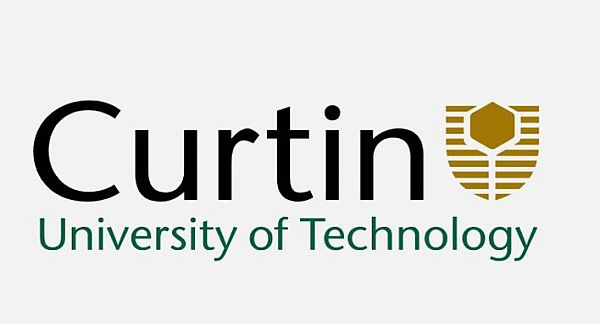
Do you want to be more reflective in your teaching practice and wonder if there are technologies that can help? If yes then you have an opportunity to join free online course named as “Analytics for the Classroom Teacher” provided by Curtin University. This free online course is ideal for school teachers who want to improve their teaching through valuable data-driven insights.
Analytics for the Classroom Teacher is an introduction to the emerging field of teaching and learning analytics from the perspective of a classroom teacher. The course will start on April 4, 2017.
Course At A Glance
- Length: 6 weeks
- Effort: 4 hour per week
- Subject: Education & Teacher Training
- Institution: Curtin University
- Languages: English
- Price: Free
- Certificate Available: Yes
- Session: The course will start on April 4, 2017
Providers Details
- About University: Curtin University is Western Australia’s largest and most culturally diverse university, with more than 53,000 students from over 130 countries. Curtin is ranked amongst the world’s best. In the Academic Ranking of World Universities 2015, Curtin asserted its position amongst the top two per cent of universities worldwide, thanks to its growing reputation as a research-intensive university.
- Aim of University: Curtin’s mission is to change minds, lives and the world through leadership, innovation and excellence in teaching and research.
Requirements
No specific knowledge or education for the course the only gift to yourself is your ability to seek knowledge .
About This Course
- Benefits: You’ll learn to use analytics to improve your lesson plans and your delivery of those plans, and discover more about your students’ learning. The language of the course is English.
- Importance of the Subject in Today’s Scenario: Teachers have always had to analyze data about how their students are learning, but data analytics tailored to their needs offers the promise of supporting and automating much of that work, allowing them to spend less effort administering and more effort teaching.
How to Join This Course
You should register yourself through the given link to join this free on-line course: https://courses.edx.org/register
Course Format
- Module 0 – Orientation
- Familiarization of participants with the course structure, policies and outline.
- Module 1 – Introduction to educational data for supporting data-driven decision making in school education
- Introduce the concept of educational data
- Discuss how educational data can be used to inform data-driven decision-making at various levels of school operations, strengthening school autonomy
- Identify data literacy for teachers as a core competency for supporting not only school accountability and compliance to (national) regulatory standards, but also continuous school self-evaluation and improvement
- Introduce the need for data analytics technologies for efficient and effective educational data-driven decision-making, and highlight learning analytics and teaching analytics, which will be further discussed in the course
- Module 2 – Teaching analytics: Analyse your lesson plans to improve them
- Introduce the need to capture and document teaching designs using lesson plans
- Define the concept of teaching analytics as a way to enable the analysis of a teaching design and reflection upon it
- Present the current state-of-the-art in teaching analytics tools that can be used by classroom teachers
- Demonstrate how to use teaching analytics tools to analyse a lesson plan
- Module 3 – Learning analytics: Analyse the classroom delivery of your lesson plans and discover more about your students
- Discuss the concept of personalisation in 21st century school education and the need for generating, updating and maintaining accurate student profiles
- Define the concept of learning analytics as the means for supporting personalised teaching and learning, through the measurement, collection, analysis and reporting of students’ educational data generated during the learning process
- Present the current state-of-the-art in learning analytics methods and tools that can be used by classroom teachers
- Demonstrate how to use learning analytics tools to analyse the classroom delivery of a lesson plan, identify individual student needs and better support the individual student
- Module 4 – Teaching and learning analytics to support teacher inquiry
- Introduce the concept of reflective practice as an important instrument for practice-based professional development as well as organisational learning and improvement
- Define the concept of teacher inquiry as a key method for data-driven reflection on-action, related to the process where teachers build useful knowledge about teaching and learning through the deliberate and systematic study of their own practice
- Present indicative teaching and learning analytics tools that can support teacher inquiry
- Demonstrate how to use teaching and learning analytics tools to reflect on your teaching practice.
- Module 5 – Conclusion
- Finalize their assignments
- Discuss their overall MOOC learning experience with their peers, and
- Reflect on their learning experience by submitting a course review and feedback survey.
Why Take This Course
- Advantage of Course: The course will then focus on the school teacher, and how data analytics can help you to make improvements in your classroom. Course discuss the concept of personalization in 21st century school education and the need for generating, updating and maintaining accurate student profiles.
- Certificate: You can pursue a verified certificate to highlight the knowledge and skills you gain ($50) Add the certificate to your CV or resume, or post it directly on LinkedIn. Receive an instructor-signed certificate with the institution’s logo to verify your achievement and increase your job prospects.
Learning Outcomes
- How educational data analytics can improve classroom teaching and learning, as well as supporting data-driven decision making at various levels of school operations
- An understanding of the current state-of-the-art in teaching and learning analytics tools and methods
- How teaching analytics can be used to analyse your lesson plans
- How learning analytics can be used to analyse the classroom delivery of your lesson plan and reveal more about your students’ learning
- How you can reflect on your teaching practice by combining insights from both teaching and learning analytics
Instructors
Demetrios Sampson: Demetrios is a Professor of Learning Technologies at Curtin University’s School of Education in Western Australia.
Suggested Reading
No basic knowledge is required for the course.
You Might Also Be Interested In
If you are interested you can also join “Design in the Classroom with Cooper Hewitt, Smithsonian Design Museum” free online course.
Conclusion
- Experts from all over the world will provide an overview of the current state-of-the-art in teaching and learning analytics. You’ll learn how teachers, curriculum developers and policy makers are collecting and analyzing data from the classroom to help guide decisions at all levels.
- Your Certificate provides a detailed transcript of what you’ve learned. This includes how long you spent studying the course, and your average test score. The Certificate and transcript give you evidence to show during job or university applications, or appraisals.
Detailed Information
For more information about the course, you can check the given link:
https://www.edx.org/course/analytics-classroom-teacher-curtinx-edu1x-0#!

